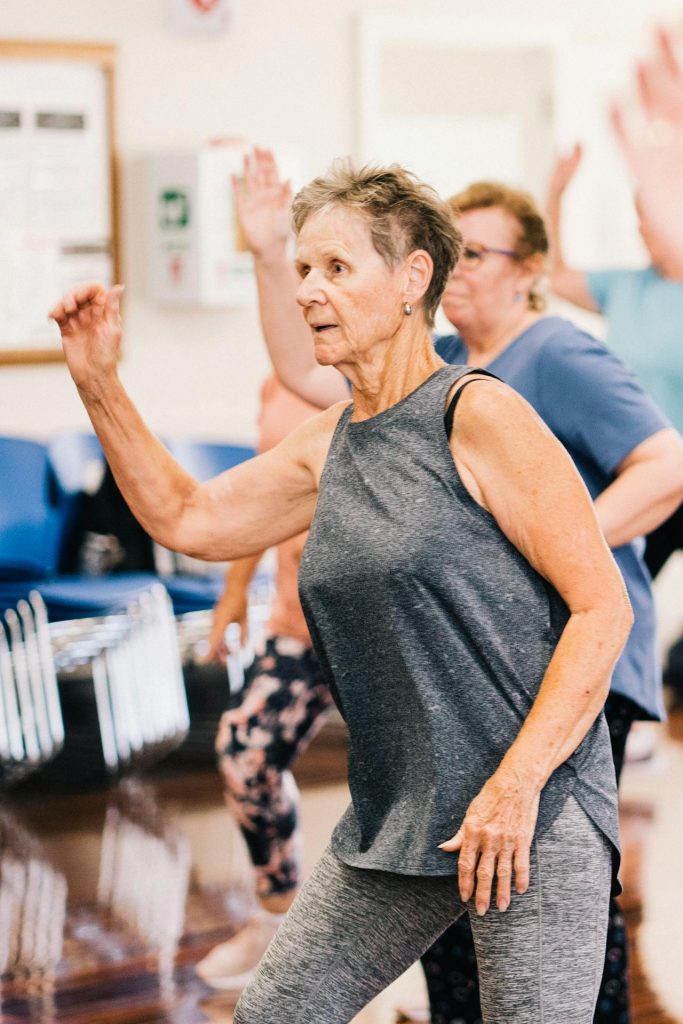Staying physically active is crucial for seniors to maintain their health, mobility, and overall well-being. Regular exercise plays a key role in preventing chronic diseases, improving mental health, and enhancing the quality of life during the golden years. In this detailed guide, we’ll explore the vital benefits of physical exercise for seniors, effective exercises to include in daily routines, and tips for safely incorporating activity into everyday life.
1. The Critical Benefits of Physical Exercise for Seniors
Engaging in regular physical activity offers a multitude of benefits that profoundly impact both physical and mental health for seniors.
Key Advantages:
- Improves Cardiovascular Health: Regular exercise strengthens the heart, enhances circulation, and significantly reduces the risk of heart disease and stroke.
- Enhances Mobility and Flexibility: Consistent movement maintains joint flexibility, muscle strength, and balance, effectively reducing the risk of falls and related injuries.
- Boosts Mental Health: Exercise stimulates the release of endorphins, which naturally alleviate symptoms of depression, anxiety, and stress, promoting a positive mental state.
- Promotes Weight Management: Staying active helps seniors maintain a healthy weight, lowering the risk of obesity-related conditions like diabetes and hypertension.
- Increases Bone Density: Weight-bearing exercises strengthen bones, decreasing the risk of osteoporosis and fractures, particularly in aging adults.
2. Essential Types of Exercises for Seniors
A well-rounded exercise routine should incorporate various types of exercises to address different aspects of physical fitness, ensuring a comprehensive approach to health.
Key Exercise Categories:
- Aerobic Exercises: Activities such as walking, swimming, and cycling improve cardiovascular health and boost overall endurance.
- Strength Training: Incorporating weights, resistance bands, or bodyweight exercises like squats and push-ups helps build and maintain muscle mass, crucial for daily functioning.
- Flexibility Exercises: Stretching routines and activities like yoga enhance flexibility and range of motion, supporting better mobility and reducing stiffness.
- Balance Exercises: Practices such as tai chi and standing on one leg can significantly improve balance, helping to prevent falls and enhance stability.
3. Starting an Exercise Routine: Tips for Seniors
Initiating a new exercise regimen can seem daunting, but with the right approach, seniors can gradually build a routine that suits their fitness level and health needs.
Key Tips:
- Consult a Healthcare Provider: Before beginning any new exercise program, it’s essential for seniors to consult with their healthcare provider, especially if they have chronic conditions or specific concerns.
- Set Realistic Goals: Start with achievable goals and progressively increase the duration and intensity of workouts to avoid burnout or injury.
- Listen to Your Body: Pay attention to how your body responds to exercise. If pain or discomfort arises, it’s important to stop and seek advice from a healthcare professional.
4. Safety Tips for Exercising: Prioritizing Senior Health
Safety should be a top priority when seniors engage in physical activity, particularly for those with health conditions or mobility limitations.
Key Safety Practices:
- Warm-Up and Cool Down: Always begin with a warm-up to prepare the muscles and end with a cool-down to prevent stiffness and aid recovery.
- Stay Hydrated: Adequate hydration before, during, and after exercise is crucial, especially during prolonged or intense activities.
- Use Proper Equipment: Ensure that footwear and any necessary equipment are appropriate and in good condition to prevent injuries.
- Exercise in a Safe Environment: Choose safe, well-lit areas for outdoor activities and ensure that indoor exercise spaces are free of obstacles and hazards.
5. The Social Benefits of Exercise: Joining Classes and Groups
Participating in group exercise classes can provide not only physical benefits but also motivation and social interaction, making the experience more enjoyable and sustainable.
Key Opportunities:
- Senior Fitness Classes: Many community centers and gyms offer fitness classes specifically tailored to seniors, providing a safe and supportive environment.
- Walking Clubs: Joining or forming a walking club can help seniors stay active while socializing with peers, making exercise more fun and less of a chore.
- Virtual Classes: For those who prefer the convenience of home, numerous online platforms offer virtual fitness classes for seniors, ranging from yoga to aerobics.
6. Incorporating Exercise into Daily Life: Practical Tips
Exercise doesn’t always need to be a formal workout session. Integrating physical activity into daily routines can provide significant health benefits without feeling like a chore.
Key Ideas:
- Active Transportation: Opt for walking or cycling instead of driving for short trips, adding more physical activity to your day.
- Household Chores: Activities like gardening, cleaning, and yard work are excellent forms of exercise that also contribute to maintaining a healthy living environment.
- Play with Grandchildren: Engaging in active play with grandchildren offers a fun way to stay physically active while strengthening family bonds.
7. Managing Chronic Conditions with Exercise: A Tailored Approach
Exercise is a powerful tool in managing chronic conditions, helping seniors improve their quality of life and manage symptoms more effectively.
Key Strategies:
- Arthritis: Low-impact exercises such as swimming and tai chi can reduce joint pain and stiffness, enhancing mobility without exacerbating symptoms.
- Diabetes: Regular physical activity helps control blood sugar levels and improves insulin sensitivity, a crucial factor in diabetes management.
- Heart Disease: Cardiovascular exercises, when performed safely, can strengthen the heart and improve overall cardiovascular health, contributing to better heart disease management.
8. Mental Health Benefits of Exercise: Enhancing Cognitive and Emotional Well-being
Beyond physical health, exercise plays a significant role in improving mental health and cognitive function, offering numerous psychological benefits for seniors.
Key Mental Health Benefits:
- Reduces Stress: Physical activity naturally reduces stress levels, promoting relaxation and a sense of well-being.
- Improves Sleep: Regular exercise helps regulate sleep patterns, leading to better sleep quality and more restful nights.
- Enhances Cognitive Function: Exercise has been shown to improve memory, attention, and processing speed, potentially reducing the risk of cognitive decline and conditions like dementia.
9. Staying Motivated: Tips for Long-Term Success
Maintaining motivation to exercise can be challenging, but finding activities that you enjoy and setting achievable goals can help sustain a long-term exercise habit.
Key Motivation Strategies:
- Variety: Incorporating a mix of different types of exercises keeps the routine interesting and prevents boredom.
- Social Support: Exercising with friends or joining a group can provide encouragement and accountability, making it easier to stay committed.
- Track Progress: Use a journal or a fitness app to track your progress, set goals, and celebrate milestones, reinforcing your commitment to staying active.
Conclusion: Embracing an Active Lifestyle for a Healthier Retirement
Physical exercise is essential for seniors to maintain health, mobility, and overall well-being. By understanding the wide-ranging benefits, choosing appropriate exercises, and seamlessly incorporating physical activity into daily life, seniors can enjoy a healthier, more active lifestyle. Remember, it’s never too late to start exercising and experiencing the transformative benefits of staying active, ensuring a fulfilling and vibrant retirement.



